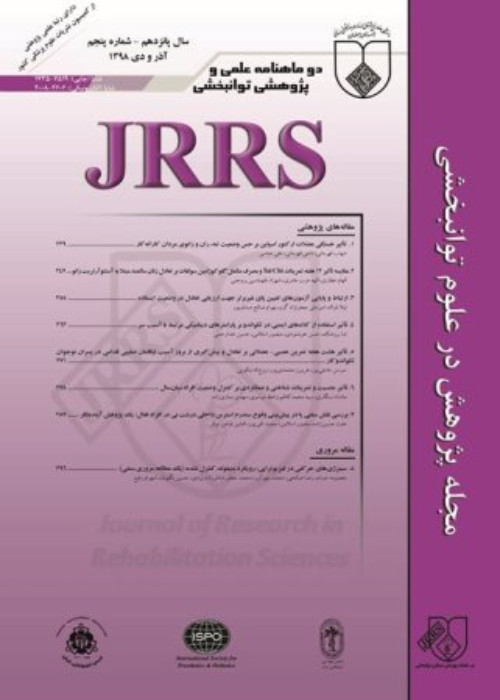The effects of imitating complex and simple sentences on speech dysfluency rates among stuttering and non- stuttering Farsi-speaking children with the age range of 4-6 years: some initial observations
Author(s):
Abstract:
Introduction
Past research on the relationship between stuttering and different linguistic factors has shown that in children, non-fluent utterances are more complex than fluent utterances. This study, using an imitation task, investigated whether or not complex and simple sentences exert an influence on the amounts of speech disfluency among stuttering Farsi-speaking children, and then compared the results with those obtained from non-stuttering controls. The results could have some implications for clarifying the nature of stuttering and shed some light on the question of appropriate treatment methods.Materials And Methods
It was a cross-sectional descriptive-analytic study. The participants included 10 stuttering and 10 non-stuttering children between 4 and 6 years of age who spoke Farsi language as their native language. The participants in the two groups were matched by age and gender. The stimuli were two sets of sentences: one set consisted of 13 simple sentences and the other one included 10 complex sentences. The length of successive sentences was increased by adding one morpheme to each of them. Each participant was requested to repeat exactly what he/she had heard. To calculate the rate of disfluency in each utterance, the number of non-fluent words was divided by the total words of that utterance and the result expressed as a percentage. The disfluency percentages of simple and complex sentences, once among stutterers and non-stutterers separately and then between these two groups, were compared and analyzed using SPSS soft ware.Results
In both stuttering and non-stuttering children, there was a significant difference between rates of disfluency on simple and complex sentences (P < 0.05).Conclusion
The result of this study showed that complex sentences caused more disfluency rates than did simple sentences and it was the case for both groups of participants. Moreover, stuttering children had more disfluency rates than did non-stuttering children as the syntactic complexity of stimuli increased.Language:
Persian
Published:
Journal of Research in Rehabilitation Sciences, Volume:6 Issue: 1, 2010
Page:
71
magiran.com/p815897
دانلود و مطالعه متن این مقاله با یکی از روشهای زیر امکان پذیر است:
اشتراک شخصی
با عضویت و پرداخت آنلاین حق اشتراک یکساله به مبلغ 1,390,000ريال میتوانید 70 عنوان مطلب دانلود کنید!
اشتراک سازمانی
به کتابخانه دانشگاه یا محل کار خود پیشنهاد کنید تا اشتراک سازمانی این پایگاه را برای دسترسی نامحدود همه کاربران به متن مطالب تهیه نمایند!
توجه!
- حق عضویت دریافتی صرف حمایت از نشریات عضو و نگهداری، تکمیل و توسعه مگیران میشود.
- پرداخت حق اشتراک و دانلود مقالات اجازه بازنشر آن در سایر رسانههای چاپی و دیجیتال را به کاربر نمیدهد.
In order to view content subscription is required
Personal subscription
Subscribe magiran.com for 70 € euros via PayPal and download 70 articles during a year.
Organization subscription
Please contact us to subscribe your university or library for unlimited access!


